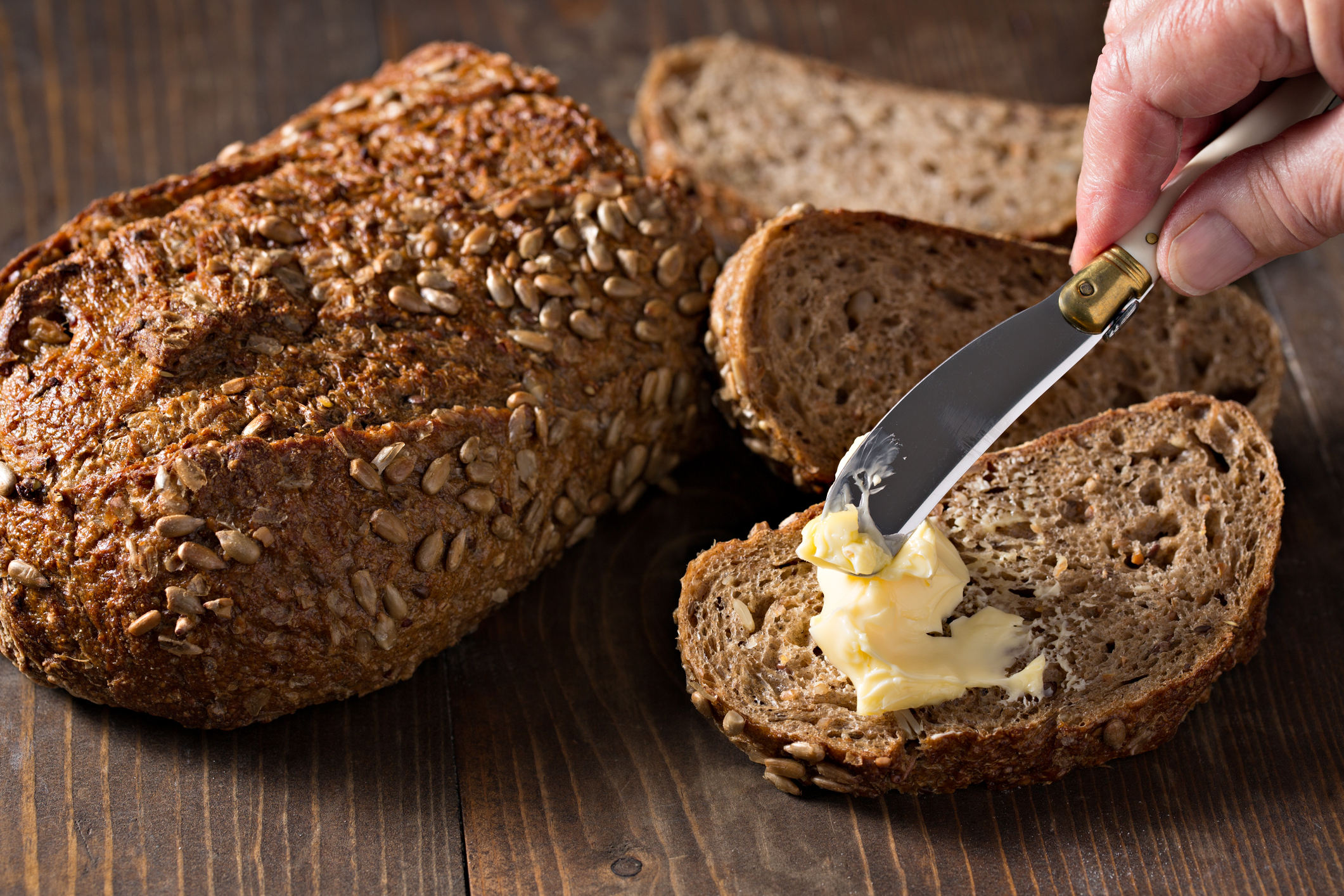-
There’s been a lot of chatter and confusion as to which one is better for your health. We’ll take a closer look at both to see which one should stay on your kitchen table.
So what’s the beef with butter?
Butter’s been getting a bad rap in recent times, and it boils down to this; butter is high in saturated fats. In fact, 50% of butter is saturated fat. That’s a lot of bad fat. Why is it bad? More on that later.
Now let’s put margarine under the knife
Margarine is made with vegetable oils. Vegetable oils are unsaturated fats, which are good for you. So, what’s the issue? The confusion stems from trans fat. The process that gives vegetable oils more body also produces small amounts of trans fats. And according to the Heart Foundation, trans fats are worse than saturated fats.
But there is more to this debate, particularly in Australia. Read on to find out.
The good, the bad and the fatty
To better understand the difference between good and bad fats, we need to understand the effects that certain fats have on the human body.
- Saturated fats from foods such as butter, bacon and full-fat milk, increase the level of LDL
cholesterol in the bloodstream. LDL stands for Low Density Lipoprotein and it’s to blame for
clogging up our arteries and increasing the risk of heart disease. - Unsaturated fats (both monounsaturated and polyunsaturated) from margarine, vegetable
oils and nuts increase good cholesterol. Good cholesterol is called High Density Lipoprotein or HDL, and it carries LDL away from your arteries and back to the liver for processing. - Trans fats, on the other hand, deliver a double-bad whammy. Not only do they increase bad (LDL)
cholesterol, they also lower the good one (HDL) in our bloodstream.
However, margarine is not the only food that contains trans fats – they’re also found in natural foods. And according to Food Standards Australia New Zealand, this includes animal products such as cheese, meats and butter. Yep, butter can also contain small amounts of trans fats. In fact, according to the Heart Foundation:
Australian margarine spreads have some of the lowest levels of trans fat in the world and significantly less trans fat than butter. Australian spreads now have on average 0.2g trans fat per 100g, compared to 4g per 100g in butter.
It’s margarine by a margin!
Health wise, it looks like margarine is the better choice. But there are healthier alternatives to butter
and margarine, and most often, they’re sitting right there in the same aisle. Healthier options include avocadoes, nut spreads like almond butter, olive oil or flaxseed oil spreads. These options are best because they’re full of all the good fats, and none of the bad ones.But if you really must indulge in the yellow stuff, look out for the lowest trans fat content on the label and as with any naughty food, enjoy in moderation!
Read more about the link between heart health and blood types
- Saturated fats from foods such as butter, bacon and full-fat milk, increase the level of LDL
Butter or margarine?

-
What causes muscle cramps?
Dr Helen Surtees explains what causes muscle cramps, how to prevent them, and how to stop them quickly.
-
What causes bad breath?
Find out how to keep your mouth smelling fresh
-
Signs to look out for when a cold is getting more serious
When you should see a doctor for a cold.
-
The health checks to keep in mind at different stages in your life
Have you had these health checks?
-
Bowel cancer: risks, symptoms, diagnosis and treatment
Learn more about bowel cancer
-
Flu myths debunked
Is 'man flu' real? Can you catch the flu from the flu vaccine? We separate flu facts from flu fictions.
Subscribe to receive the best from Live Better every week. Healthy recipes, exercise tips and activities, offers and promotions – everything to help you eat, move and feel better.
By clicking sign up I understand and agree to Medibank's privacy policy






